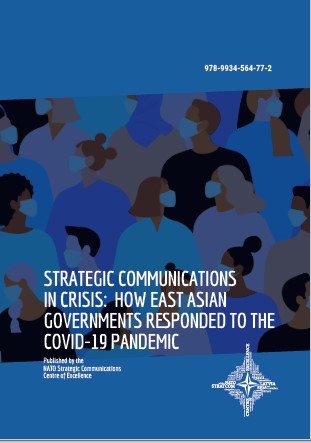STRATEGIC COMMUNICATIONS IN CRISIS: HOW EAST ASIAN GOVERNMENTS RESPONDED TO THE COVID-19 PANDEMIC
STRATEGIC COMMUNICATIONS IN CRISIS: HOW EAST ASIAN GOVERNMENTS RESPONDED TO THE COVID-19 PANDEMIC
Author(s): Monika Izandra Hanley, Kristina Van Sant, Rueban Manokara
Contributor(s): Anna Reynolds (Editor)
Subject(s): Politics / Political Sciences, Politics, Social Sciences, Economy, National Economy, Political Sciences, Civil Society, Sociology, Government/Political systems, Comparative politics, Health and medicine and law
Published by: NATO Strategic Communications Centre of Excellence
Keywords: Pandemic; Corona Virus; Japan; Singapore; Malaysia; South Korea; Government Communications Activities;
Summary/Abstract: The COVID-19 outbreak has confirmed that, in an era of globalisation, local disasters quickly and unexpectedly escalate into world-spanning crises. What began as a local viral infection in Wuhan grew into a global pandemic in less than two months. The COVID-19 crisis is an unprecedented event in almost every way, not least from a strategic communications perspective. Faced with uncertainty about the development of the virus and its impact on society, governments are underenormous pressure to communicate policy initiatives and advice to their publics under extraordinary circumstances. While recognising that the crisis is still unfolding at a global level, this report explores how countries chose to act and communicate in relation to the outbreak of the virus during the initial period of the crisis. Although it is still far too early to evaluate the effectiveness of any approach, comparing and contrasting different courses of action at an early stage provides valuable insight into different crisis communication strategies when swift and unanticipated communications were required.
- Print-ISBN-13: 978-9934-564-77-2
- Page Count: 41
- Publication Year: 2020
- Language: English
- eBook-PDF
- Table of Content
- Introduction

